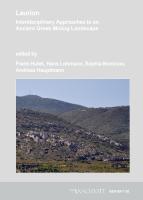Geologic and metallogenic overview of the Lavrion mining district: A guide for archaeological exploration
Über dieses Buch
The Lavrion mining district (SE Attica, Greece) comprises ore deposits of (1) low-grade Mo-Cu porphyry
style, (2) Cu-Fe skarn, (3) high-temperature carbonate replacement Pb-Zn-Ag-(Au), and (4) vein and breccia Pb-Zn-Ag mineralizations. These are the result of the transport and deposition of economic elements from fluids that circulated from the construction to the gravitational collapse of the Hellenides-Aegean Domain along the Africa-Eurasia convergent plate boundary active for the last 80 Ma. Oceanic and continental rocks of the African plate were buried to high pressure conditions in the subduction zone. Progressive southward slab retreat was accompanied by magmatism and exhumation of metamorphic rocks along high- and low-angle detachment systems, with associated mineralized systems. The porphyry and skarn deposits are spatially and genetically related to the Plaka magmatic in tru sion dated 12 – 8 Ma. Carbonate replacement is associated with decarbonation and the liberation of CO2 during exhumation at the ductile to brittle transition. Fluorite and calcite gangue minerals enclosing the vein and breccia Pb-Zn-Ag mineralization were precipitated during brittle deformation from a fluid resulting from mixing of meteoric water with evaporated seawater
closer to the surface. Base and precious metals were exploited since the Bronze Age to the late 20th century. As such, the Lavrion area represents an exceptional site to study the evolution of mining technologies through history.




